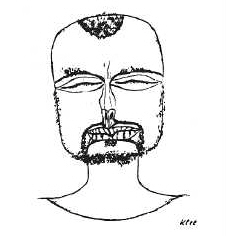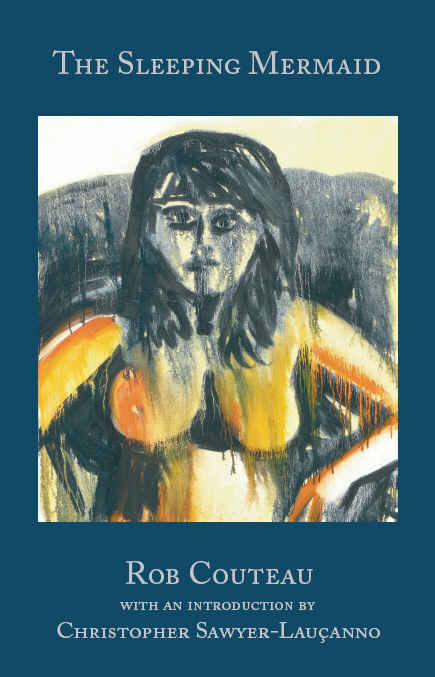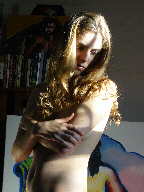|
Reflections on Paul Klee's Lost in Thought, by Rob Couteau |
Published
in: |
|
|
||
|
The most unusual portrait Iíve ever studied is that of a tiny lithograph titled Lost in Thought: a self-portrait from 1919 by the artist Paul Klee. Itís unlike any other self-portrait in that, with eyes more sealed than shut, with mouth not just closed but pensively clamped, it is a visage that looks completely inward. This powerful rendition is not simply the image of someone withdrawn from the world. Rather, it portrays a man experiencing the inner world. The emphasis is so much on the world within that the outer facade has begun to transform into strange shapes, signs, and symbols:
†† Let us consider, for a moment, the eyes. They resemble horizontal vaginae, which symbolize all that is receptive and malleable, yet forever independent of and ultimately impenetrable to an alien force. The nose resembles an X-ray, or a medical study, with the tip neatly severed to reveal a fresh perspective to the anatomy student. Perhaps the incision was due more to an aesthetic decision than to anything else, for, had the tip remained anatomically intact, it would appear to penetrate the external world. Instead, it remains flat: devoid of any classical perspective, and a wonderful device for conveying the relativity of space. This ability to imply an essential reality while simultaneously appearing two-dimensional is real magic, and, after the wondrous Persian miniatures, which so skillfully employ this technique, Klee continued the tradition into modernity. †† The nose is, after all, a symbolic one, for in its flatness it remains primal in appearance, like a pigís snout, and thus alludes to a primitive, instinctual reality. Such primeval power is echoed in precisely rendered lines of tension, which rise up in waves to the area above and between the eyes, where an accented central line marks a climax of unnerving inner stress. The vaginal contours of the eyes plead for a more tranquil contemplation, yet everything else supersedes such an impulse and suggests an unrelenting inner pressure and a concentration disallowing any such thing. Even the inner eyelids wrinkle in tense cresting waves of agitation. The vertical lines above the nose swell, like small lungs inhaling a doleful air, while the lips of the mouth appear cracked: lacerated with vertical stripes, and emphasizing a tightly drawn, pained, forcibly stilled meditation. †† The overall feel of this bust resembles that of a well-shined bell: one grand and immobile, yet about to swing into clamorous revolt. The expression is highly symmetrical, reflecting an inner, psychic symmetry fixed between two opposites: one seeking calm, the other about to explode. †† The most remarkable thing about this portrayal of self is that it seems to offer nothing to the world, yet all the world may stop to receive as great a transformation through this image as through any other significant vision. Although the world has lost its obsessive attraction for him, it is pulled by an alluring gravity into him. . †† With such masterly lines, Klee has achieved all this. His portrait is, like most of his work, a portrait not of the ego but of the greater self that propels mankind. |
||
|
This essay is featured in: |
||
Updated: 7 July 2011 | All text Copyright © 2011 | Rob Couteau |


